How to Comply with Sep-1 Guidelines Using Virtual Care

Understand what SEP-1 guidelines mean and how virtual care solutions raise the standard for hospitals across the country
Lisa-Mae Williams, PhD, RN | September 12, 2025
All hospitals strive for operational and patient care excellence, but many come up short on meeting federal requirements as they seek to increase and decrease specific metrics such as overhead, length of stay, transfers, patient satisfaction scores, bed occupancy, wait times, staffing ratios, mortality and more. The list is staggering.
It helps to begin with the most pressing issues. One of the leading causes of death in hospitals, for instance, is sepsis. Sepsis is a life-threatening condition experienced by at least 1.7 million adults in the U.S., with 350,000 dying as a result every single year. Unfortunately, there is no single direct cure for sepsis; instead, it requires the quickness of providers to intervene, flag abnormalities and initiate treatment options immediately.
To help hospitals reach key steps and milestones in early sepsis care, the Severe Sepsis and Septic Shock Early Management Bundle (SEP-1) was developed by Emanuel Rivers, MD, of Henry Ford Hospital, and Sean Townsend, MD, of California Pacific Medical Center – Sutter Health. The Centers for Medicare and Medicaid Services adopted these guidelines in 2015 and advocate for its pillars on timely sepsis recognition and early intervention with lifesaving therapies.
In recent years, a powerful combo has caught the attention of several hospitals: SEP-1 and virtual care. Virtual care can be applied across several departments and tailored to a facility’s needs. These solutions include sepsis, stroke, neurology, nursing and sitting, to name a few.
In this blog, we’ll dive into the importance of SEP-1 and how tele-sepsis virtual care can take your hospital’s compliance status to a new level.
The Importance of Adherence to CMS SEP-1 and VBP
SEP-1 has a strong emphasis on timing. The risk of death increases by 4-7% every hour that a patient with severe sepsis is not treated. With SEP-1, hospitals are required to measure and report their metrics, ensuring every patient, regardless of race, socioeconomic status, location or insurance, receives the appropriate sepsis care.
The guidelines also apply an ‘all-or-none’ measure in which hospitals must complete all elements of the protocol to be considered fully compliant. Failure to complete it to its entirety and within the specific time frame could result in financial penalties and damage accreditation standing.
Adhering to CMS’s SEP-1 sepsis measure is essential for hospitals striving to deliver both high-quality care and strong organizational performance. For clinicians, SEP-1 ensures a standardized, evidence-based approach that supports earlier recognition, timely interventions and improved patient outcomes.
For administrators, compliance is directly tied to Value-Based Purchasing (VBP), where adherence can secure financial incentives and protect against costly penalties. Together, SEP-1 and VBP reinforce a dual commitment: elevating clinical excellence while strengthening fiscal responsibility and institutional reputation.
So, how does virtual sepsis care support VBP?
Tele-sepsis programs enhance compliance by providing real-time clinical expertise, continuous monitoring, and rapid escalation support, helping frontline teams meet SEP-1 requirements consistently and effectively. This virtual safety net not only improves adherence but also drives better outcomes across both patient care and hospital performance.
Common Challenges to SEP-1 Success
Despite its importance, many hospitals and providers struggle with the strict guidelines. National average SEP-1 bundle compliance hovers around 49%.
Some obstacles that hospitals encounter include:
- Complex Workflows
The SEP-1 guidelines are complex, consisting of several measures with austere timeframes and reporting. As a result, hospitals struggle to coordinate workflows across multiple teams, leading to compliance failure.
- CMS Submission Requirements
The SEP-1 submission requirements set by CMS demand strict adherence to their formatting, data specification and file layout. Composing these data files is time-intensive and demands zero errors; any mistake can result in rejection of an entire submission.
- Review and Tracking Limitations
With so many cases on deck, it’s difficult to pinpoint what components are underperforming, which can lead a facility to fall out of compliance. Without these metrics, hospitals can’t build effective strategies because they won’t know what needs to be addressed.
Virtual Care as a SEP-1 Accelerator
Research finds that 79% of U.S. hospitals have integrated telehealth services into their care models. Tele-sepsis solutions offer hospitals tailored methods to not only improve SEP-1 performances, but to combat staffing shortages, reduce operational costs, shorten lengths of stay, improve staff and patient satisfaction, shorten intervention rates and much more.
In tandem with SEP-guidelines, virtual care can assist on-site teams across several levels of care and tear down compliance barriers.
- Continuous Clinical Surveillance
This method records time-stamped events inputted directly into the electronic health record while following HIPAA guidelines. With AI-powered platforms and virtual sepsis specialists, hospitals can ensure that early signs of sepsis are flagged in a timely manner and intervention is faster, ultimately leading to a higher compliance score and lower mortality rates.
- 24/7 Specialist Access
Remote consults from critical care experts and intensivists are in high demand, and telehealth offers these calls anytime, from anywhere. These highly trained providers guide teams through decision points across every component of SEP-1, ensuring no step is delayed. These relationships boost the confidence of on-site frontline workers, encouraging them to act right away while meeting CMS standards.
- Real-Time Monitoring and Reporting
Live monitoring and pre-built reports in CMS-approved layouts drastically reduce hours of manual documentation and prevent rejection. Performance dashboards organized by unit, shift, intervention type, outcomes and follow-ups are a great base for developing KPIs.
Integrating Virtual Care into Hospital Workflows
To leverage virtual care effectively:
- Secure IT support and resources to host telehealth infrastructure
- Train and refresh both onsite and virtual teams with SEP-1 compliance
- Design collaborative protocols to share across hospital departments
- Monitor performance continuously using virtual care analytics and CMS SEP-1 documentation requirements
Looking Ahead
SEP-1 guidelines are a lifesaving mandate, yet 50% of hospitals are not fully compliant. Virtual care solutions offer a proven way to accelerate your SEP-1 adherence. By integrating telehealth components like continuous, seamless integration, remote consultations and 24/7 specialist access, sepsis mortality rates no longer need to overshadow positive hospital metrics.
If you’d like to learn how Intercept Telehealth can help your team improve SEP-1 compliance, contact us today.
Key References:
https://scholarlycommons.baptisthealth.net/se-all-publications/3286/
https://healthmanagement.org/c/icu/issuearticle/improved-sep-1-compliance-using-ai-supported-tools



